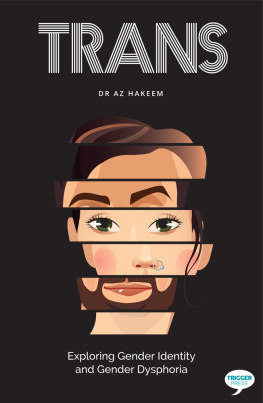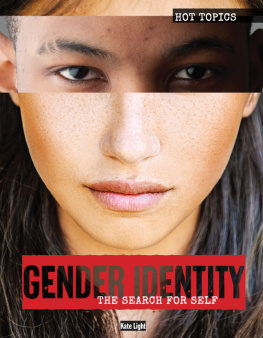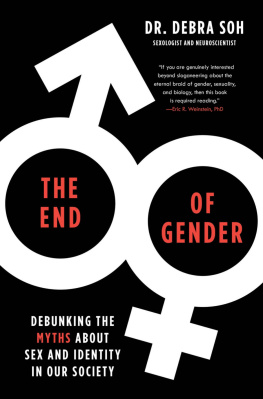
Published in 2022 by Cavendish Square Publishing, LLC
29 E. 21st Street New York, NY 10010
Copyright 2022 by Cavendish Square Publishing, LLC
First Edition
No part of this publication may be reproduced, stored in a retrieval system, or transmitted in any form or by any meanselectronic, mechanical, photocopying, recording, or otherwise without the prior permission of the copyright owner. Request for permission should be addressed to Permissions, Cavendish Square Publishing, 29 E. 21st Street New York, NY 10010. Tel (877) 980-4450; fax (877) 980-4454.
Website: cavendishsq.com
This publication represents the opinions and views of the author based on his or her personal experience, knowledge, and research. The information in this book serves as a general guide only. The author and publisher have used their best efforts in preparing this book and disclaim liability rising directly or indirectly from the use and application of this book.
Portions of this work were originally authored by Charlie Light and published as Gender Identity: The Search for Self (Hot Topics). All new material this edition authored by Anika Abraham.
All websites were available and accurate when this book was sent to press.
Library of Congress Cataloging-in-Publication Data
Names: Abraham, Anika, author.
Title: Gender identity / by Anika Abraham.
Description: First edition. | New York: Cavendish Square Publishing,
[2022] | Series: Topics today | Includes bibliographical references and index.
Identifiers: LCCN 2020014414 (print) | LCCN 2020014415 (ebook) | ISBN 9781502660930 (library binding) | ISBN 9781502660923 (paperback) | ISBN 9781502660947 (ebook)
Subjects: LCSH: Gender identity--Juvenile literature. | Gender nonconformity--Juvenile literature.
Classification: LCC HQ18.55 .A27 2022 (print) | LCC HQ18.55 (ebook) | DDC 305.3--dc23
LC record available at https://lccn.loc.gov/2020014414
LC ebook record available at https://lccn.loc.gov/2020014415
Editor: Katie Kawa
Copyeditor: Nicole Horning
Designer: Deanna Paternostro
Some of the images in this book illustrate individuals who are models. The depictions do not imply actual situations or events.
CPSIA compliance information: Batch #CS22CSQ: For further information contact Cavendish Square Publishing LLC, New York, New York, at 1-877-980-4450.
Printed in the United States of America

CONTENTS
Introduction
A Place in History
Chapter One
Understanding Sex
Chapter Two
Understanding Gender
Chapter Three
Embracing Gender Identity
Chapter Four
The Importance of Language
Chapter Five
Changes and Transformations
Chapter Six
Difficulties, Triumphs, and Champions

Members of the LGBTQ+ community have fought throughout history for rights and acceptance.
A PLACE IN HISTORY
T hroughout history, people from marginalized and oppressed communities have seldom been given a voice or been able to tell their stories from their own perspectives. Too often, some groups have been the subject of ridicule and discrimination, pushed to the edges of society and shunned.
Some of these oppressed and misunderstood communities have included those identifying as transgender, nonbinary, gender nonconforming, and intersex. These people have always existed; however, their stories were often unheard. Through the years, many people have grappled with their gender identity, trying to fit in a world filled with little compassion for those who dont fit into stereotypical gender roles. Many have bravely lived as their authentic selves, but many others have faced harsh treatment and have lived in great fear because of who they are or who they lovesometimes even having to hide their true identity to protect themselves or feel accepted. This has often been the case for many members of the LGBTQ+ community. LGBTQ+ stands for lesbian, gay, bisexual, transgender, and queer or questioning.
Discussions of gender identity and expression may seem new to some, but they have their roots far back in human history. In order to gain a well-rounded perspective on this topic, its important to look at the history of the LGBTQ+ community as a whole and how the treatment of members of this community and the understanding of the diversity within this community have changed and evolved over time.
Ancient Acceptance
Acceptance of LGBTQ+ individuals in ancient societies, such as Greece and Rome, has been debated by scholars and historians. According to some accounts, these societies may have been places where same-sex relationships were commonplace, and even encouraged. In ancient Sparta, there was an army called the Band of Lovers that same-sex couples would join. The island of Lesbos is known for the ancient Greek poet Sappho, whose work has been interpreted by some as descriptions of love and desire between women, although little is known for sure about her personal life and the actual meaning of her poems. Still, Lesbos gave rise to the term lesbianism, or romantic or sexual relationships between two women.

LGBTQ+ individuals have existed throughout history, including in ancient Greece.
Ages of Improvement
Relationships between same-sex couples, as well as stories about people whose gender expressionthe outward expression of their gender identitydidnt fit the traditional norms of their time, have been known throughout the ages, but these stories were often hidden from so-called polite society. In the 19 th and 20th centuries, people such as Dr. Mary Edwards Walker, the American Civil Wars only female surgeon and the only woman to earn the Medal of Honor, and singer Gladys Bentleyboth of whom preferred to dress in clothing generally reserved for menwere considered controversial but respected for their talents. By the 1920s, different ideas about gender were coming more into the forefront, pushed in ways that challenged tradition through the introduction of different hairstyles, more modern clothing styles, and more demands for equality.
As the decades passed, however, society became stricter and less adventurous. In the United States, the typical nuclear family hinged on traditional gender roles: The man was often the main provider, while the woman stayed at home taking care of children. Still, there were some people who defied societal expectations of sexuality and gender. These people, however, were often prohibited from expressing themselves in public. If they did, they risked fines or jail time.

Mary Edwards Walker was known for dressing in mens clothing. She was a leading voice for dress reform during her time.

As noted on this plaque, the Stonewall riots of 1969 were the start of huge changes for the LGBTQ+ community and its pursuit of civil rights.















